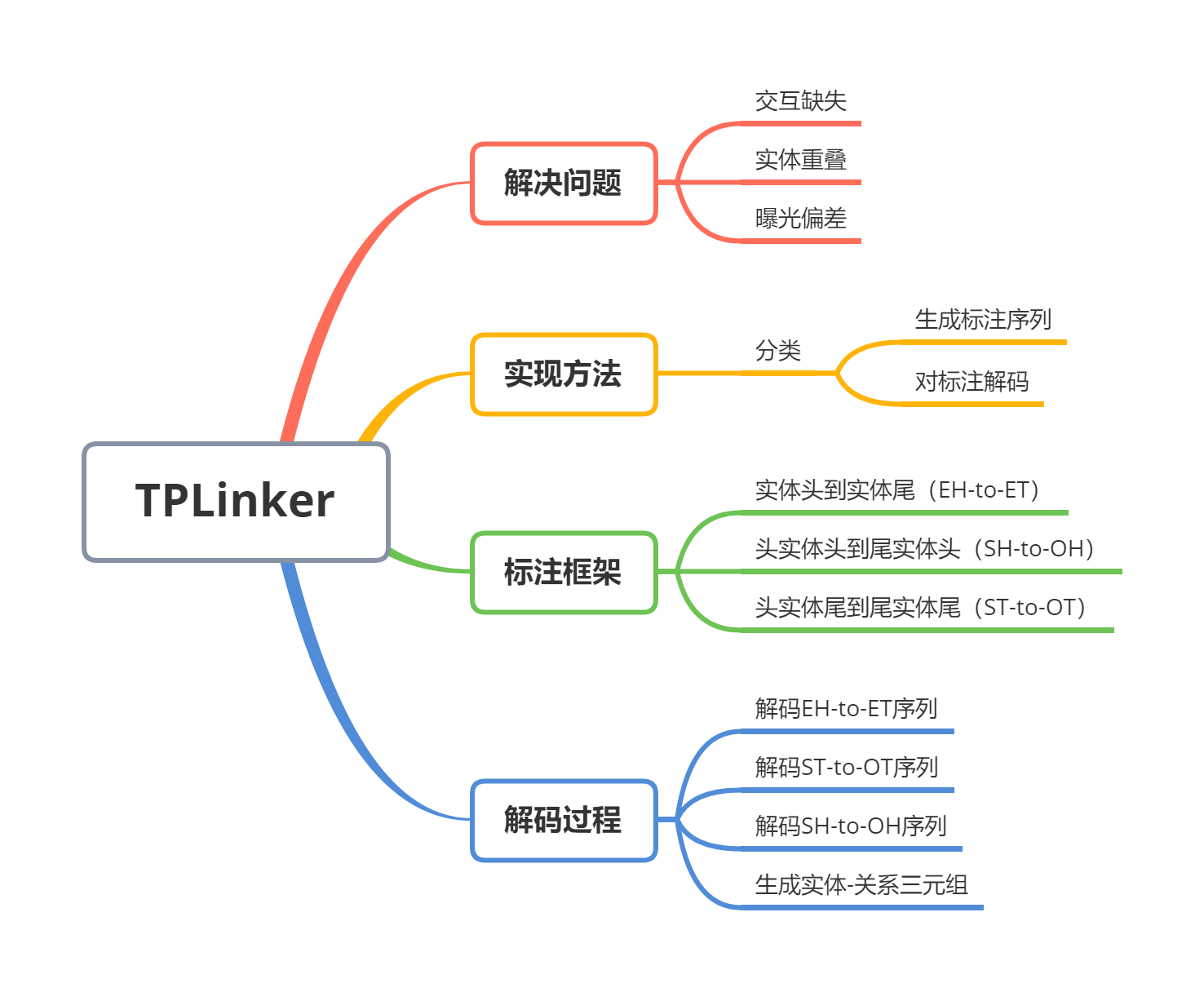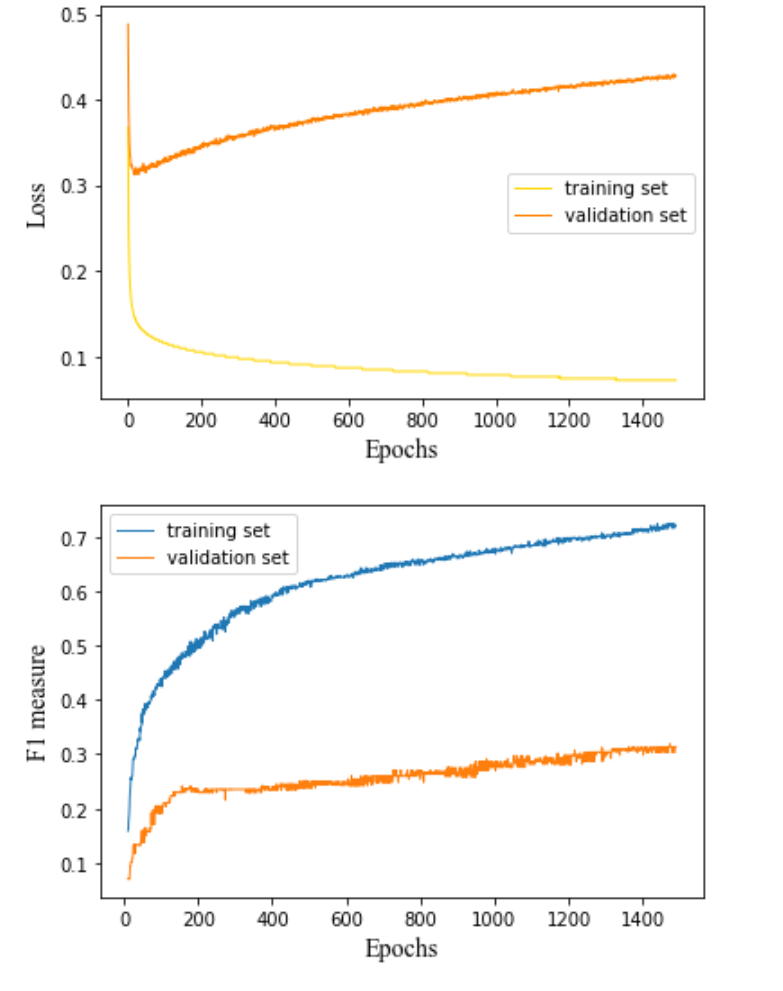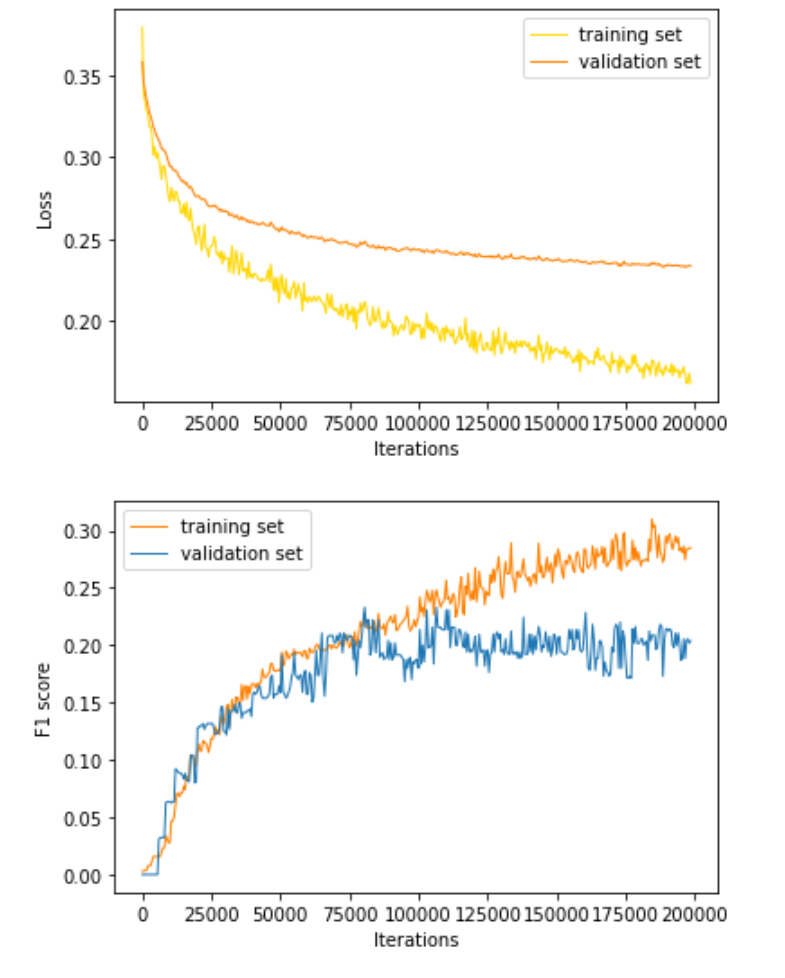Projects in Knowledge Engineering class (2022 Spring, BIT) 北理工 知识工程 大作业
NER_SoftmaxRegression:Used Numpy to build a generalized linear model on NER; achieved 67.4% accuracy on the NEPD dataset.PaperReading_TPLinker:Used video and report of a brief introduction to TPLinker: Single-stage Joint Extraction of Entities and Relations Through Token Pair Linking in COLING 2020.RelationExtraction_GPlinker:Used Pytorch to apply GPlinker to a Chinese dataset.EventExtraction_LogisticRegression: Example code for Knowledge Engineering class 2023 Spring. Both Numpy and Pytorch versions are included for Logistic Regression.
See report.pdf in each folder for detailed information of each project.
Named Entity Recognition (NER) is the fundamental task of identifying words with specific meanings in text in the field of natural language processing. This experiment used the basic annotation corpus of the People's Daily newspaper from Peking University to build a generalized linear model and achieved recognition of three types of entities, namely, personal names, place names, and organization names, using the BIO representation method for corresponding annotations.
The goal of named entity recognition was achieved in this experiment through the following steps:
- Vectorizing the original dataset and selecting features to represent each word as a vector, and converting the corresponding classification labels into numerals that can be used in computation.
- Generating training, validation, and testing sets and cleaning the data in the training set.
- Initializing the parameters W, determining the learning rate and number of iterations, and repeating steps 4-7 until the selected number of iterations is reached:
- Using the mini-batch method, a certain number of training set data is selected, and the Softmax probability is calculated. The classification predicted by the current model is the one with the highest probability for an input.
- Calculating the loss function value of the current model and taking its derivative.
- Updating the parameter W using the gradient descent method based on the derivative of the loss function.
- Comparing the predicted classification of the model with the actual classification, calculating the F1-measure of the training and validation sets used to evaluate the accuracy of the current model, and saving the maximum value of the validation set F1-measure and the corresponding parameter W.
- Comparing the sizes of the F1-measure of the validation sets corresponding to different feature selections for input words, data cleaning methods in the training set, learning rates and numbers of iterations during training, and W parameter update methods to select the best model for prediction.
- Using the W value reserved in step 7 for the corresponding model to predict the testing set and calculating its F1-measure.
命名实体识别,即对文本中具有特定意义的词进行识别,在自然语言处理领域具有基础性意义。本实验采用北京大学《人民日报》基本标注语料库, 通过构建广义线性模型,实现了对人名、地名、机构名三类实体的识别,并采用BIO表示法进行了相应的标注。
本实验主要通过以下步骤,实现了命名实体识别的目标:
- 对原始数据集进行向量化表示,选取特征将每个词语表示为一个向量,并将对应的分类标签转化为可以参与运算的数字。
- 生成训练集、验证集和测试集,并对训练集中的数据进行数据清洗。
- 初始化参数W,确定学习率和迭代次数,重复步骤4~7直到达到选定的迭代次数:
- 采用mini-batch方法,抽取一定数量的训练集数据,计算Softmax概率。对于一个输入,概率最大的即为当前模型所预测的分类。
- 计算当前模型的损失函数值,并对其求导。
- 根据损失函数的导数,采用梯度下降法对参数W进行更新。
- 将模型预测的分类与实际分类进行比较,求出用于评估当前模型精确程度的训练集与验证集的F1-measure,并保存使得验证集F1-measure最大值及对应的参数W。
- 通过改变输入词的特征选取、训练集中数据清洗的方式、训练时的学习率和迭代次数、参数W更新的方法,比较其对应的验证集F1-measure的大小,选择最好的模型用于预测。
- 将对应模型在步骤7保留的W值用于测试集,计算其F1-measure。
Brief introduction to TPLinker: Single-stage Joint Extraction of Entities and Relations Through Token Pair Linking in COLING 2020.
- report.pdf: text version
- video.mp4: video version
Pytorch version of GPLINKER based on the code xhw205/GPLinker_torch.
Changes:
- add the evaluation part and a lot of annotations
- write the main part in jupyternotebook, a more reader-friendly way.
-
Model Configuration: config.ini file
This includes the paths to the dataset and pre-trained model, as well as the settings for training parameters, making it easy to manage parameters. In particular:
- [paths]: location of pre-trained RoBERTa model and dataset
- [paras]: parameters for training. head_size corresponds to the dimension of the head in Multi-Head Attention.
-
Dataset Storage: datasets folder
This experiment uses the CMeIE dataset for medical entity relation extraction, stored in JSON format, including the following files:
- 53_schema.json: SPO relationship constraint table
- CMeIE_train.json: training set
- CMeIE_dev.json: validation set
- CMeIE_test.json: test set
-
Data Preprocessing: utils/data_loader.py file
This part encodes the dataset data and converts the data and labels into forms that can be used by the GPLinker model. The data_generator class provides the data generation method for training and inference using PyTorch DataLoader.
-
GPLinker Model: GPlinker.py file
This uses the PyTorch neural network library to implement the relation extraction GPLinker model and defines the way to calculate the loss function.
-
Optimization Method: utils/bert_optimization.py file
This uses the HuggingFace Adam optimizer for Bert, i.e., the BertAdam function in the file, and uses weight decay, learning rate warming, gradient clipping, and other methods during training.
-
Model Parameter Storage: result/GPLinker_para.pth file
After training, this stores all parameters of the model for use in predicting entity relations during evaluation.
-
Training and Evaluation: main.ipynb file
This file completes the forward and backward propagation of GPLinker, stores various parameters, and uses them for model evaluation.
-
模型配置:config.ini文件
包括数据集与预训练模型的路径、训练时的参数设置,方便了参数的管理,其中:
- [paths]:预训练模型RoBERTa、数据集的位置
- [paras]:训练时的参数,其中,head_size对应Multi-Head Attention中head的维度
-
数据集存储:datasets文件夹
本实验采用医学实体关系抽取CMeIE数据集,以json文件的形式存储,包含以下文件:
- 53_schema.json: SPO关系约束表
- CMeIE_train.json: 训练集
- CMeIE_dev.json: 验证集
- CMeIE_test.json: 测试集
-
数据预处理:utils/data_loader.py文件
该部分将数据集数据进行编码,并将数据、标签转化为可用于GPLinker模型所需要的形式。其中,data_generator类提供了pytorch的DataLoader在训练、推理时的数据生成方式。
-
GPLinker模型:GPlinker.py文件
采用pytorch的神经网络库,实现了关系抽取GPLinker模型,并规定了损失函数的计算方式。
-
优化方法:utils/bert_optimization.py文件
采用HuggingFace针对Bert的Adam优化器,即文件中的BertAdam函数,并在训练过程中采用权重衰减、学习率预热、梯度剪裁等方式。
-
模型参数存储:result/GPLinker_para.pth文件
训练结束后,存储模型的所有参数,用于评估模式下的关系抽取预测。
-
训练与评估:main.ipynb文件
完成GPLinker的正反向传播,存储各项参数,并将其用于模型的评估。
Results (Due to the small data set, there are overfitting problems):





